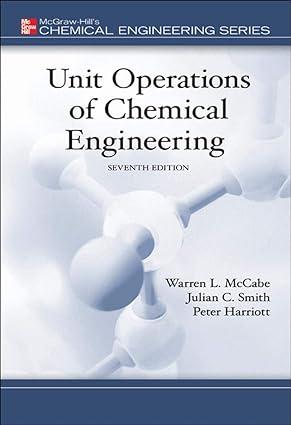Both surfaces of the tube of Prob. 12.5 become fouled with deposits from the water. The fouling
Question:
Both surfaces of the tube of Prob. 12.5 become fouled with deposits from the water. The fouling factors are 330 on the inside and 200 on the outside surfaces, both in Btu/ft2 · h · °F. What percentage decrease in overall coefficient is caused by the fouling of the tube?
Prob. 12.5
Assume that the kerosene of Prob. 12.4 is replaced with water at 110ºF and flowing at a velocity of 8 ft/s. What percentage increase in overall coefficient may be expected if the tube surfaces remain clean?
Prob. 12.4
Kerosene is heated by hot water in a shell-and-tube heater. The kerosene is inside the tubes, and the water is outside. The flow is countercurrent. The average temperature of the kerosene is 110°F, and the average linear velocity is 8 ft/s. The properties of the kerosene at 110°F are: specific gravity, 0.805; viscosity, 1.5 cP; specific heat.0.583 Btu/lb · °F; and thermal conductivity, 0.0875 Btu/ft · h · °F. The tubes are low-carbon steel 3/4-in. OD by BWG 16. The heat-transfer coefficient on the shell side is 300 Btu/ft2 · h · °F. Calculate the overall coefficient based on the outside area of the tube.
Step by Step Answer:

Unit Operations Of Chemical Engineering
ISBN: 9780072848236
7th Edition
Authors: Warren McCabe, Julian Smith, Peter Harriott





